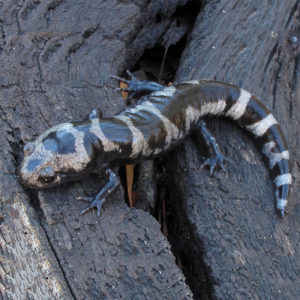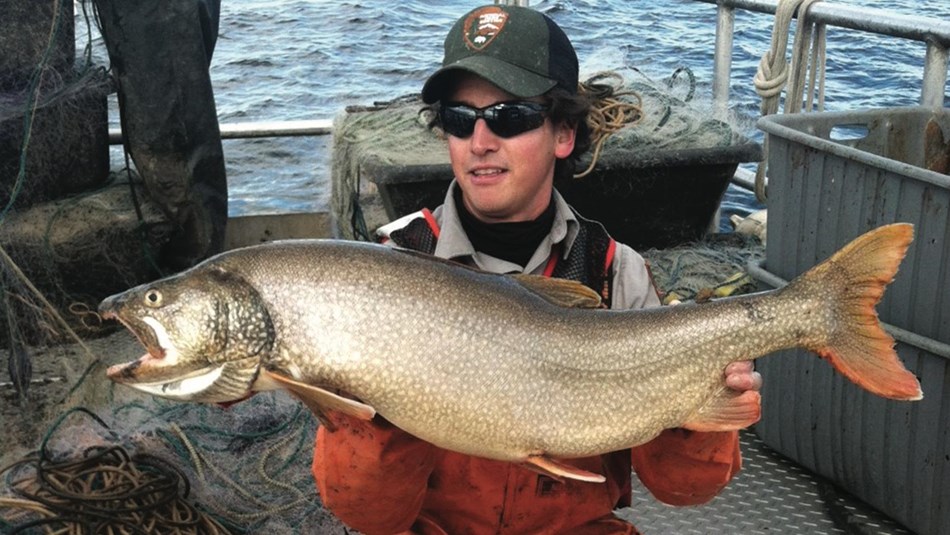
The National Park Service has a legal mandate to manage lands and waters under its jurisdiction so as to “preserve unimpaired” their natural and cultural resources (NPS Organic Act 54 U.S.C. § 100101, et seq.) Invasive species undermine efforts to achieve that mission. In 2000, the NPS adopted a program to coordinate management of invasive plants. It’s not as effective as needed – see the strategic plan.
However, only recently has NPS begun trying to prioritize and coordinate programs targetting the many animals and animal diseases which threaten Park resources. These organisms range from emerald ash borer and quagga mussels; to pythons, goats, and pigs; to diseases such as white nose syndrome of bats and avian malaria in Hawai`i.
In 2017, NPS released an internal study of the pervasive threat to Park resources posed by invasive animals and discussed steps to overcome barriers to more effective responses (Redford et al., 2017; full citation at end of this blog). The Chief of the Biological Resources Division initiated this report by asking a Science Panel to evaluate the extent of the invasive animal problem, assess management needs, review best practices, and assess potential models that could serve as a service-wide organizational framework. The report was to pay particular attention to innovative and creative approaches including, but not limited to, new genomic tools. I summarized the Panel’s findings and conclusions in a blog when its report appeared in 2017.
Significantly, the Panel’s final report states that “a general record of failure to control invasive species across the system” was caused principally by a lack of support for invasive species programs from NPS leadership.
This report has now appeared in the form of a peer-reviewed article in the journal Biological Invasions by Dayer et al. 2019 (full citation at end of this blog). Although nine of the ten authors are the same on both reports there are substantive differences in content. For example, the journal article reiterates the principal findings and conclusions of the Panel’s final report, but in less blunt language.
What’s Been Watered Down
The toning down is seen clearly in the statements some of the panel’s six key findings.
Finding #1
The panel’s report says: invasive animals pose a significant threat to the cultural and natural values and the infrastructure of U.S. national parks. To date, the NPS has not effectively addressed the threat they pose.
Dayer et al. says: the ubiquitous presence of invasive animals in parks undermines the NPS mission.
Finding #2
The panel’s report says: managing invasive animals will require action starting at the highest levels, engaging all levels of NPS management, and will require changes in NPS culture and capacity.
Dayer et al. says: coordinated action is required to meet the challenge.
Finding #4
The panel’s report states: effective management of invasive animals will require stakeholder engagement, education, and behavior change.
Dayer et al. says: public engagement, cooperation and support is [sic] critical.
Wording of the other three “key findings” was also changed, but these changes are less substantive.
Drayer et al. also avoid the word “failure” in describing the current status of NPS” efforts to manage invasive animal species. Instead, these authors conclude that the invasive species threat “is of sufficient magnitude and urgency that it would be appropriate for the NPS to formally declare invasive animals as a service-wide priority.”
Where the Documents Agree – Sort of
Both the Panel’s report and Dayer et al. state that invasive animal threats are under-prioritized and under-funded. They say that addressing this challenge must begin at the highest levels within the NPS, engage all levels of management, and will require investments from the NPS leadership. Even within individual parks, they acknowledge that staffs struggle to communicate the importance of invasive animal control efforts to their park leadership, especially given competition with other concerns that appear to be more urgent. And they admit that parks also lack staff capacity in both numbers and expertise.
Also, both the Panel’s report and Dayer et al. urge the NPS to acknowledge formally that invasive animals represent a crisis on par with each of the three major crises that drove Service-wide change in the past: over-abundance of ungulates due to predator control; Yellowstone fire crisis (which led to new wildfire awareness in the country); and recognition of the importance of climate change.
The Panel suggested ways to update NPS’ culture and capacity: providing incentives for staff to (1) address long-term threats (not just “urgent” ones) and (2) put time and effort into coordinating with potential partners, including other park units, agencies at all levels of government, non-governmental organizations, private landowners, and economic entities. Dayer et al. mention these barriers but does not directly mention changing incentives as one way to overcome them.
Both the Panel’s report and Dayer et al. suggest integrating invasive animal threats and management into long-range planning goals for natural and cultural landscapes and day-to-day operations of parks and relevant technical programs (e.g., Biological Resources Division, Water Resources Division, and Inventory and Monitoring Division).
What is Missing from the Journal Publication
The Panel’s final report noted the need for increased funding. It said that such funding would need to be both consistent and sufficiently flexible to allow parks to respond to time-sensitive management issues. It proposes several approaches. These include incorporating some invasive species control programs (e.g., for weeds and wood borers) into infrastructure maintenance budgets; adopting invasive species as fundraising challenges for non-governmental partners (e.g., “Friends of Park” and the National Park Foundation); and adopting invasive species as a priority threat. Dayer et al. do not discuss funding issues.
The final internal report envisioned the NPS becoming a leader on the invasive species issue by 1) testing emerging best management practices, and 2) educating visitors on the serious threat that invasive species pose to parks’ biodiversity. As part of this process, the authors suggest that the NPS also take the lead in countering invasive species denialism. Dayer et al. do not mention the issue of invasive species deniers.
Common Ground: Status of Invasive Animals in the Parks
The Panel’s report and Dayer et al. describe the current situation similarly:
- More than half of the National parks that responded to the internal survey (245 of the 326 parks) reported problems associated with one or more invasive animal species.
- The total number of species recorded was 331. This is considered to be an underestimate since staffs often lack the ability to thoroughly survey their parks – especially for invertebrates.
- Invasive species threats to Parks’ resources have been recognized for nearly 100 years. The original report notes that 155 parks reported the presence of one or more exotic vertebrate species in 1977. At that time, exotic animals were the fourth most commonly reported source of threats. In 1991, parks identified 200 unfunded projects to address exotic species, costing almost $30 million.
- Only a small percentage of non-native animal invasions are under active management. Dayer et al. stated that 23% have management plans at the park unit level, and only 11% are reported as being ‘‘under control”.
- Individual parks have effective programs targetting specific bioinvaders (examples are described in Redford et al; a brief summary of these efforts is provided in my previous blog.
Common Ground on Some Solutions
The report and Dayer et al. promote the same steps to improve invasive animal management across the Service. Both note that the NPS is adopting formal decision support tactics to update and strengthen natural resource management across the board. More specific steps include
- establishing a coordination mechanism that enables ongoing and timely information sharing.
- mainstreaming invasive species issue across the NPS branches or creating a cross-cutting IAS initiative among the Biological Resources Division, Water Resources Division, Inventory and Monitoring Division, Climate Change Response Program, and the regional offices.
While both documents call on the NPS to develop and test emerging technologies, the Panel’s final report is more detailed, providing, in Table 5, a list of several areas of special interest, including remotely triggered traps, species-specific toxicants, toxicant delivery systems, drones, environmental DNA, and sterile-male releases. Dayer et al. mention eDNA and metabarcoding for ED/RR, biocontrol, and gene drives to control invasive pathogens. (Neither document discusses possible concerns regarding use of CRISPR and other gene-altering technologies, other than to say there would be public concerns that would need to be addressed.)
Both documents note the necessity of working with resource managers beyond park boundaries to detect and manage species before they arrive in parks. They note that developing and operationalizing such partnerships requires time and resources. Furthermore, invasive species prevention, eradication, and containment programs can be effective only with public support. They suggest strengthening NPS’ highly regarded public outreach and interpretation program to build such support, including through the use of citizen scientists.
The Panel’s final report said that the NPS should recognize that the condition of the ecosystem is the objective of efforts. Its authors recognized that achieving this goal might require reconsidering how ecosystem management is organized within NPS so interacting stressors (e.g., fire) and management levers (e.g., pest eradication/suppression, prescribed fire) would be addressed. For this, the NPS would need to create a focused capacity to address the pressing issue of invasive animals in such a way that fosters integrated resource management within parks, focusing on fundamental values of ecosystem states, and not eradication targets. Dayer et al. called for the same changes without specifically labelling “condition of the ecosystem” as the goal.
Publication of Dayer et al. prompted me to find out what progress the NPS has made in responding to the “key findings” in the Panel’s final report (neither publication calls them “recommendations”).
The National Park Service has acted on the recommendation to appoint an “invasive animal coordinator” within the Biological Resources Division. That person is Jennifer Sieracki. However, I wonder whether a person located in BRD is of sufficient stature to influence agency policy across all divisions. It is not clear whether there is active coordination with the national-level invasive plant coordinator.
Dr. Sieriaki responded to my query by noting the following new efforts 1) to improve outreach to partners and the public, and 2) to expand formal and informal partnerships with local, state, federal and tribal entities and local communities near parks.
- NPS should soon finalize two formal partnerships with other agencies and organizations for outreach and management of invasive animal species.
- NPS is working with researchers at the US Geological Survey to expand an existing modeling tool for identifying potential suitable habitat for invasive plant species to include invasive insects. This will help staff focus on the most likely locations for introductions and thus assist with early detection and control.
- NPS has created a Community of Practice so NPS employees can seek each other’s advice on addressing invasive animal issues. A workshop of regional invasive species coordinators is planned for the coming months to guide direction of the service-wide program and identify other top priorities. (Seriacki pers. comm.)
I also wonder whether the NPS can achieve the top-level coordination and outreach to the public called for by both reports while complying with the terms of Public Law 116-9 – the John N. Dingle Jr. Conservation, Management, and Recreation Act, which was enacted a year ago. Title VII, Section 10(i) of this law limits spending to carry out invasive species program management and oversight to 10% of appropriated funds. Less than 15% may be spent on investigations (research), development activities, and outreach and public awareness efforts (Section 10(h)). The law does allow spending for investigations regarding methods for early detection and rapid response, prevention, control, or management; as well as inspections and interception or confiscation of invasive species to prevent in-park introductions.
For more information, see my previous criticism of NPS failure to address invasive species issues here.
Posted by Faith Campbell
We welcome comments that supplement or correct factual information, suggest new approaches, or promote thoughtful consideration. We post comments that disagree with us — but not those we judge to be not civil or inflammatory.
See also my earlier discussion of the new legislation here.
SOURCES
Dayer, A.A., K.H. Redford, K.J. Campbell, C.R. Dickman, R.S. Epanchin-Niell, E.D. Grosholz, D.E. Hallac, E.F. Leslie, L.A. Richardson, M.W. Schwartz. 2019. The unaddressed threat of invasive animals in U.S. National Parks. Biol Invasions
https://doi.org/10.1007/s10530-019-02128-0
Redford, K.H., K. Campbell, A. Dayer, C. Dickman, R. Epanchin-Niell, T. Grosholz, D. Hallac, L. Richardson, M. Schwartz. 2017. Invasive animals in U. S. National Parks: By a science panel. Natural Resource Report NPS/NRSS/BRD/NRR—2017/1564. NPS, Fort Collins, Colorado. Commissioned by the NPS Chief of Biological Resources Division. https://irma.nps.gov/DataStore/DownloadFile/594922
Jennifer Sieracki, Invasive Animal Coordinator, Biological Resources Division, National Park Service
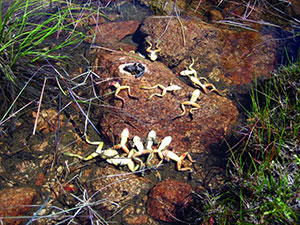
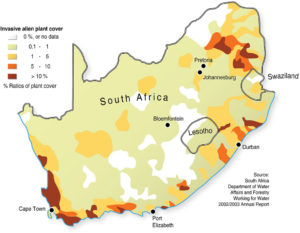
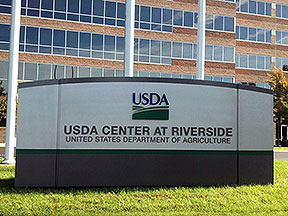
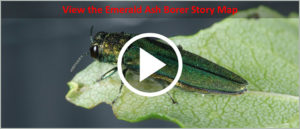
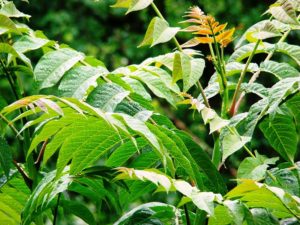 Ailanthus altissima
Ailanthus altissima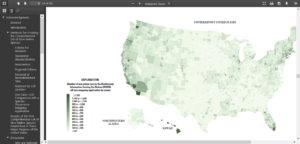
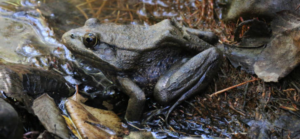 California red-legged frog
California red-legged frog